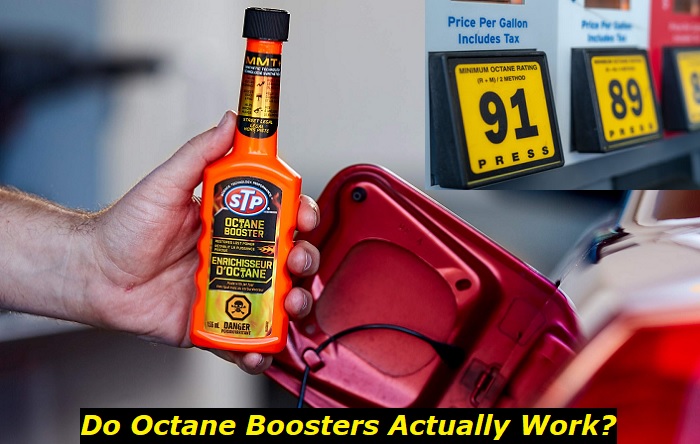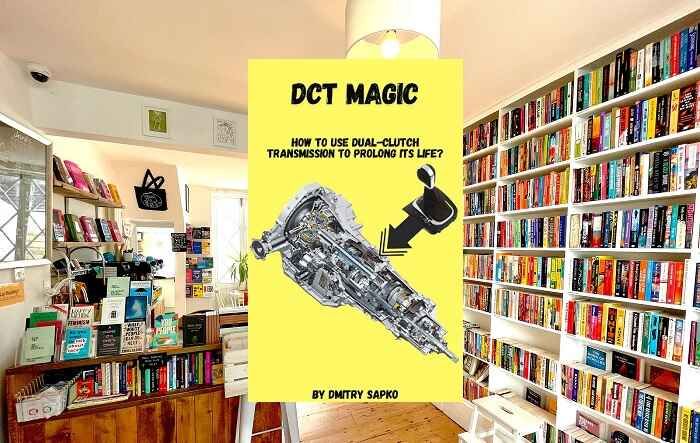Any driver that has done some research on products that are likely to improve the performance of their car may have come across octane boosters. These liquid additives are added to your vehicle's fuel tank to serve the purpose that their name eloquently describes, i.e., boosting your fuel's octane rating.
Gas improvement additives highlights
- Efficiency:mostly zero
- Availability:a lot of products available
- Average price: $35
- Way to use:pour into the fuel tank
- DIY use:yes
- Experts' advice:mostly negative advice
- Independent testing:negative
- Consequences:injector damage, fuel filter clogging, fuel pump damage, fuel tank damage

How Octane Boosters Work?
We have already mentioned that octane boosters are premium fuel treatments that are poured into your fuel tanks to improve the octane rating of your fuel. Boosting the octane rating of your fuel helps it withstand more detonation in your engine's combustion chamber. The boost in octane rating also improves your engine's compression, thus increasing performance and reducing wear and tear.
Drivers whose cars require fuel with a higher octane rating than the standard may have to rely on an octane booster if they cannot find premium fuel. Such drivers would need to use the right amount of octane booster every time they fill up their tank. Octane boosters can also be used if your car continues exhibiting signs of pinging and knocking even when using premium fuel. Most boosters are designed to lower the pre-detonation rate, thus stopping pinging and knocking due to poor-quality fuel.
Using the right amount of octane booster in the right manner will boost the octane rating of substandard fuel and prevent it from ruining your engine's components. However, if you use an octane booster incorrectly, it is likely to cause severe damage to your vehicle. Some types of octane boosters are so detrimental that governments are rushing to ban them before their adverse effects take a permanent toll on drivers, cars, and the environment.
When Is It Recommended to Use an Octane Booster?
Misconceptions have led some drivers to believe that octane boosters can increase their vehicles' torque, speed, and horsepower. They cannot. You should only use an octane booster when the fuel at the pump is below the quality dictated by your car's manufacturer. At times auto repair experts recommend the use of an octane booster to reduce engine knock or pinging. The right booster will prod your engine to function optimally while doing no harm to the components.
Will Octane Boosters Improve Your Gas Mileage?
The right octane booster will certainly improve your gas mileage if used according to the manufacturer's instructions. The booster will heighten octane, clean your fuel system and reduce the occurrence of engine hesitation, knocks, and pings. All these elements combine to improve engine performance and improve gas mileage.
However, it is important to note that since high-end octane boosters cost a pretty penny, you may end up breaking even or spending more money should you use an octane booster merely to improve gas mileage.
Types of Octane Boosters and Their Effects
The chemical properties, side effects, and proper method of use of an octane booster will depend on which of these three categories it falls under.
1. Organo-Metallics
Organo-metallics are common in the little bottles of octane boosters commonly available over the counter. These compounds, including TEL (tetraethyl lead) and MMT (methylcyclopentadienyl manganese tricarbonyl), have an octane-boosting curve that is non-linear. This means that the initial amount deposited in the fuel tank will boost the octane rating, but the boosting power will decrease as you add more organo-metallic booster. These boosters offer a measly 0.4-point increase in octane rating.
Side Effects on Your Vehicle
Organo-metallic octane boosters create hideous deposits on your engine. These deposits are so troublesome that most manufacturers of organo-metallic octane boosters add a mineral spirit to the booster. These mineral spirits are supposed to work as solvents and dissolve the nasty deposits left by the octane booster on combustion. Lubricants are also added to counter the effects of the metal deposits by helping your rings slide over them with relative ease and minimal damage.
Drivers are often stunned to hear that a dyno-test of a car with organo-metallic octane booster reveals metallic pellets flying out of the tail pipe. Yikes! Organo-metallics certainly do not belong in your engine's combustion chamber, no matter their usefulness (which isn't indispensable). It gets worse, and organo-metallics are also highly carcinogenic and pose a severe risk to humans and the environment.
2. Oxygenates
Some octane boosters contain oxygenates like alcohols and ethers that bring their own oxygen to the combustion party. Alcohols and ethers are hydrocarbon fuels that reduce your gas mileage when they combust due to their large molecular mass and the active hydroxyl (OH) group. Reducing gas mileage is reason enough to stay away from oxygenates. However, additional side effects are mentioned below.
Side Effects of Oxygenates
Unfortunately, oxygenates are highly reactive water-soluble polar compounds. In summary, they create chaos in your engine by eating away at various components, especially rubber and plastic fuel lines. If your engine components wind up leaky, chances are you are using an oxygenate-based octane booster that is rotting your components over time.
Oxygenates have been banned in various countries because they often cause tank leakages and are then dispersed by groundwater into the ecosystem.
3. Aromatics
Aromatics are the least harmful and most promising octane boosters. They have a stable benzene-ring structure that makes them the opposite of oxygenates above. Aromatics are chemical stable nonpolar compounds. Twenty-five percent of gasoline is made up of aromatics like xylene and toluene.
Unlike organo-metallic compounds, aromatics do not have a non-linear curve. This means that the more you add, the higher the octane rating of the resultant fuel mixture. Drivers add aromatics to their vehicles to achieve the high octane levels needed for European vehicles, which is about forty-five percent aromatics. Race gas has the best octane booster, which contains a mixture of toluene and xylene.
Side Effects
When used correctly, aromatics do not have any adverse side effects on your engine. In fact, aromatic octane boosters are marketed as capable of solving engine problems like knocking. Two gallons of xylene were found to boost fifteen gallons of 91-octane gas to a rating of 94.5.
Advantages of Using an Octane Booster
The biggest advantage of using an octane booster is the well-publicized increase in power and efficiency. Fuel with high octane rating burns at the optimal rate during combustion. Less advertised is the ability of high-end octane boosters to keep all your engine components humming together melodiously due to their ability to clean the internal components.
When an octane booster prevents the internal components from getting clogged, you are unlikely to face engine trouble out of the blue.
Disadvantages of Using Octane Boosters
We discourage using octane booster for any drive that doesn't need it for various reasons. First, some octane boosters, when used in the wrong amounts, will end up clogging some essential engine components. The clogging of components like oxygen sensors and spark plugs may cause severe engine damage, resulting in expensive repairs.
Second, some octane boosters contain compounds that are highly carcinogenic and reactive. Drivers who have to use octane boosters are advised to invest in high-end options that are less likely to pose a health risk to them or damage their vehicles' internal components.
How to Choose the Best Octane Booster for Your Car
It is advisable to consult a certified mechanic for the right octane booster for your car. Each car will respond differently to various octane boosters depending on its type, how well it is maintained and how long it has driven. Octane boosters are very particular, with some brands being best for unleaded gas engines and others for high-performance carburetor engine vehicles. Always read the manufacturer's instructions for use before purchasing and using any octane booster.
How Long Do Octane Boosters Last
When stored according to instructions, an octane booster can remain effective for up to two years. After each use, you should seal the container and store it in a cool dark area. You should use your octane booster within a year of opening the container because it loses potency over time.
Octane boosters best serve race car drivers and people who have taken their time to modify their engines to take maximum advantage of the booster. If you simply need to fix engine knocking or pinging, an octane booster should only serve as a temporary solution while you seek to fix the real problem.
About the authors
The CarAraC research team is composed of seasoned auto mechanics and automotive industry professionals, including individuals with advanced degrees and certifications in their field. Our team members boast prestigious credentials, reflecting their extensive knowledge and skills. These qualifications include: IMI: Institute of the Motor Industry, ASE-Certified Master Automobile Technicians; Coventry University, Graduate of MA in Automotive Journalism; Politecnico di Torino, Italy, MS Automotive Engineering; Ss. Cyril and Methodius University in Skopje, Mechanical University in Skopje; TOC Automotive College; DHA Suffa University, Department of Mechanical Engineering






Add comment